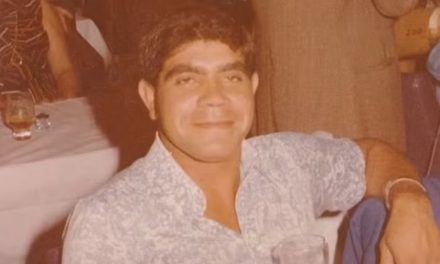Genetic genealogy has played a pivotal role in identifying the long-lost victim of the infamous ‘Scorecard Killer.’ Michael Ray Schlicht, 17, whose remains were found in 1974, was recently identified through the innovative forensic technology, shedding light on a case that had remained unsolved for almost half a century.
This breakthrough was made possible by genetic genealogists working with investigative genealogy non-profit Project Justice. Utilizing cutting-edge technology, a DNA sample from Schlicht’s remains was sent to Othram, a private laboratory. Working in collaboration with Project Justice and law enforcement, the team constructed a comprehensive family tree using commercial and criminal databases, ultimately leading to the identification of Schlicht’s long-lost relatives.
Project Justice founders Justin Woo and Lydia Ansel emphasized the transformative impact of genetic genealogy on police investigations, highlighting its potential to solve thousands of cold cases. Since 2020, Project Justice has identified over 80 murder victims, providing closure to families and bringing names back to those who had long been forgotten.
The use of genetic genealogy in law enforcement has proven instrumental in solving high-profile cases, including the Golden State Killer and the ‘Grim Sleeper.’ Notably, this technology can potentially identify a killer’s DNA directly from a crime scene, even when not present in criminal databases, offering a promising avenue for future investigations.
The recently solved case of Michael Ray Schlicht, suspected to be one of the earliest victims of the ‘Scorecard Killer,’ exemplifies the potential of genetic genealogy to resurrect cold cases. Schlicht’s remains were found in Orange County, California, in 1974, and genetic genealogy was instrumental in identifying his mother in Kansas City, Missouri, almost 50 years later.
The founders of Project Justice expressed their commitment to using genetic genealogy to bring justice to cold cases, emphasizing its potential to clear systematically a city’s backlog of unsolved cases. Despite challenges such as cost, with each sample typically costing $7,500 through their genealogy system, Woo and Ansel are optimistic about the future of genetic genealogy in law enforcement.
Additionally, genetic genealogy played a crucial role in the recent arrest of accused University of Idaho quadruple murderer Bryan Kohberger. Investigators used this technology to identify distant relatives of Kohberger, ultimately leading to his arrest after a sample of his DNA was collected from a crime scene.
As genetic genealogy continues to prove its effectiveness in solving cold cases and bringing closure to victims‘ families, the founders of Project Justice anticipate further advancements in technology and funding, paving the way for a future where genetic genealogy becomes a standard tool in law enforcement.
The ‘Scorecard Killer’ – Background
The infamous ‘Scorecard Killer’ refers to Randy Steven Kraft, a notorious American serial killer who operated during the 1970s and 1980s. Kraft was convicted of 16 murders but is suspected of having committed many more. He earned the moniker ‘Scorecard Killer’ because investigators found a coded list of 67 names and cryptic references in a notebook discovered in the trunk of his car when he was arrested.
Randy Kraft’s killing spree began in the early 1970s and continued until his arrest in 1983. His victims were mostly young men, and he was known for torturing and mutilating them before murdering them. The exact number of his victims remains uncertain, but some estimates suggest that the actual count could be higher than the 16 for which he was convicted.
Kraft’s arrest occurred during a routine traffic stop when police found a deceased victim in his car. This led to the discovery of the aforementioned list and the subsequent investigation into his gruesome crimes. The list contained nicknames and references that investigators believed were connected to the murders he had committed, and it heightened suspicions about the true extent of his killing spree.
In 1989, Randy Kraft was convicted of 16 counts of murder and sentenced to death. His modus operandi involved picking up hitchhikers or young men at bars, drugging them, and subjecting them to horrific acts of violence before ultimately killing them. The full extent of Kraft’s crimes may never be known, and he remains one of the most notorious serial killers in American history.




